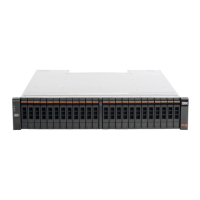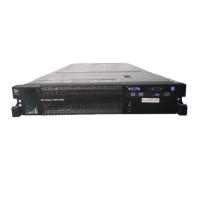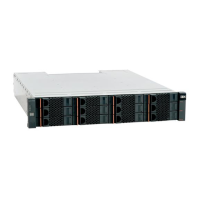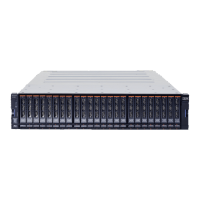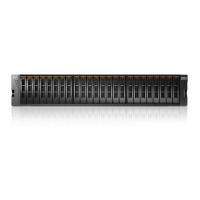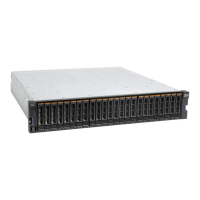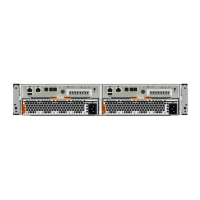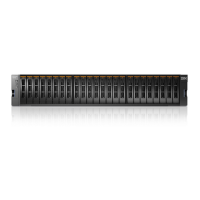Table 55. Default logical devices and physical port locations for a 2073-720 file module
Logical Ethernet
device name Device description Physical location information
mgmtsl0_0 Internal connection between the file modules Port 1 - Built-In xSeries Ethernet Port
mgmtsl0_1 Internal connection between the file modules Port 2 - Built-In xSeries Ethernet Port
ethXsl0_0 1-Gbps Public Network Port 3 - Built-In xSeries Ethernet Port
ethXsl0_1 1-Gbps Public Network Port 4 - Built-In xSeries Ethernet Port
ethXsl1_0 1-Gbps Public Network Port 7 - Quad Port 1-GB Ethernet adapter in PCI slot 2
ethXsl1_1 1-Gbps Public Network Port 8 - Quad Port 1-GB Ethernet adapter in PCI slot 2
ethXsl1_2 1-Gbps Public Network Port 9 - Quad Port 1-GB Ethernet adapter in PCI slot 2
ethXsl1_3 1-Gbps Public Network Port 10 - Quad Port 1-GB Ethernet adapter in PCI slot 2
ethXsl2_0 10-Gbps Public network Port 5 / 10-Gbps Ethernet adapter
ethXsl2_1 10-Gbps Public network Port 6 / 10-Gbps Ethernet adapter
Note: The physical port locations on your system might differ from the port
locations that are given in the preceding table if the port bonding has been
changed.
Management node role failover procedures
The following procedures either restart the management service or initiate a
management service failover from the file module hosting the active management
node role to the file module hosting the passive management node role.
Once complete, the file module that previously hosted the active management
node role now hosts the passive management node role. The file module that
previously hosted the passive management node role now hosts the active
management node role.
Note: All of these tasks require a user that is configured as a CLI admin. Other
users cannot perform these tasks.
Determining the service IP for the management node roles
Use this procedure to identify the service IP addresses for the file modules that
host the management node roles.
About this task
You need the service IP address of a file module that hosts a management node
role to perform a management failover from the file module that hosts the active
management node role to the file module that hosts the passive management node
role, when the active management node fails and the current management IP does
not respond.
Procedure
1. Connect to the CLI using SSH.
Note: Run the CLI command lsnode.
v If you get output from lsnode that shows the system configuration (as in
Example 1), proceed to step 2.
v If you get a message that the management service is stopped or is not
running (as in Example 2), attempt to log out and log in to the other file
module hosting a management node role. If the other file module is not
responding, refer to “Performing management node role failover procedures
for failure conditions” on page 185.
Chapter 4. File module 183
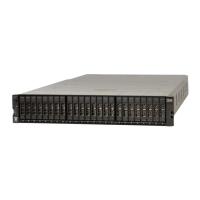
